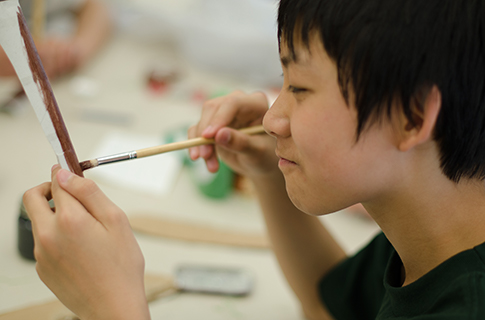Type and Purpose of Learning
Creative learning in visual arts provides students with the opportunity to explore art in a more organic way by allowing them to discover on their own how they might create a work of art with different materials. All art tools and materials are kept on a resource table so students can have easy access. The task is open-ended yet built on the students’ skills and knowledge about the elements of art.





